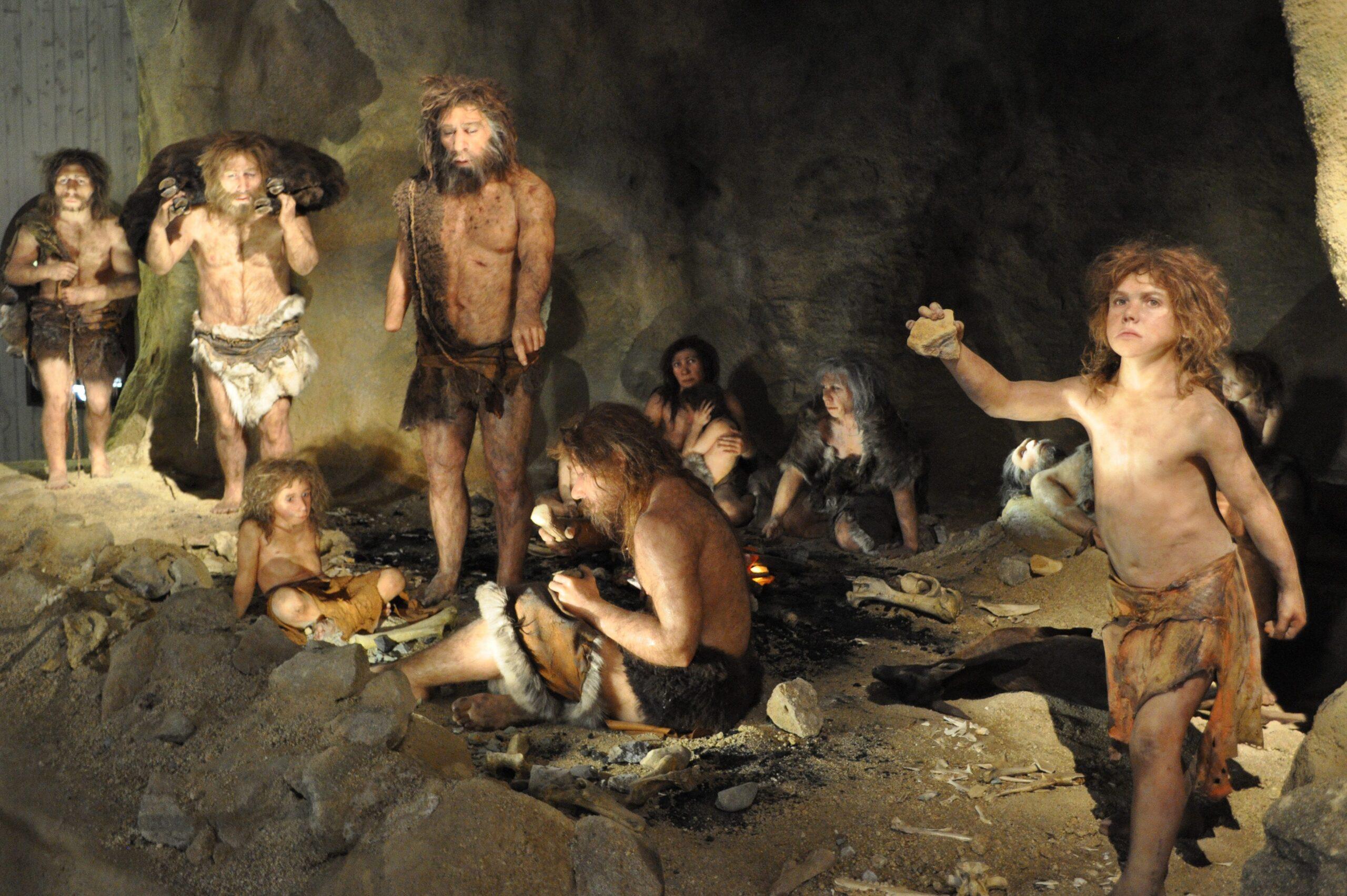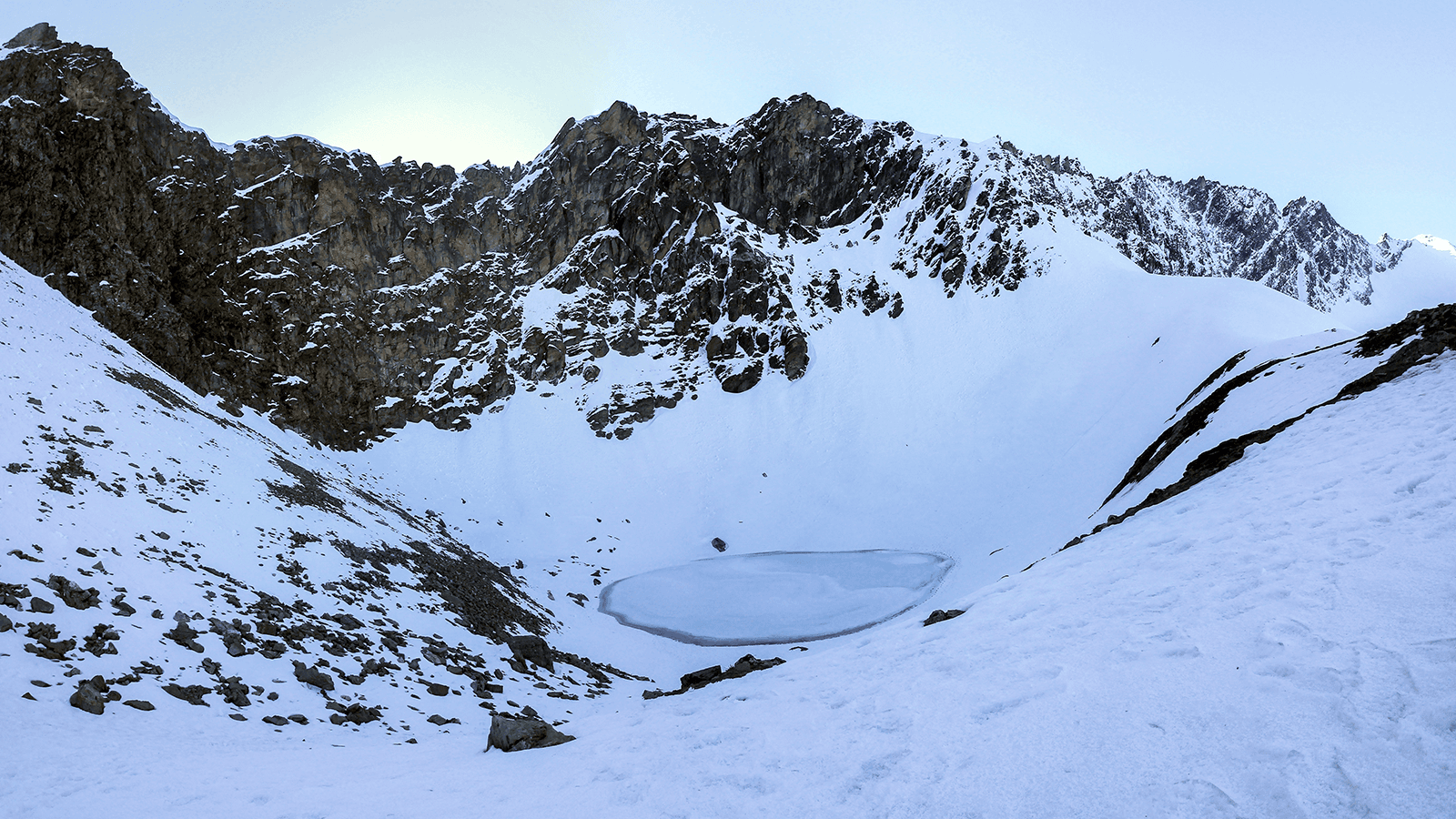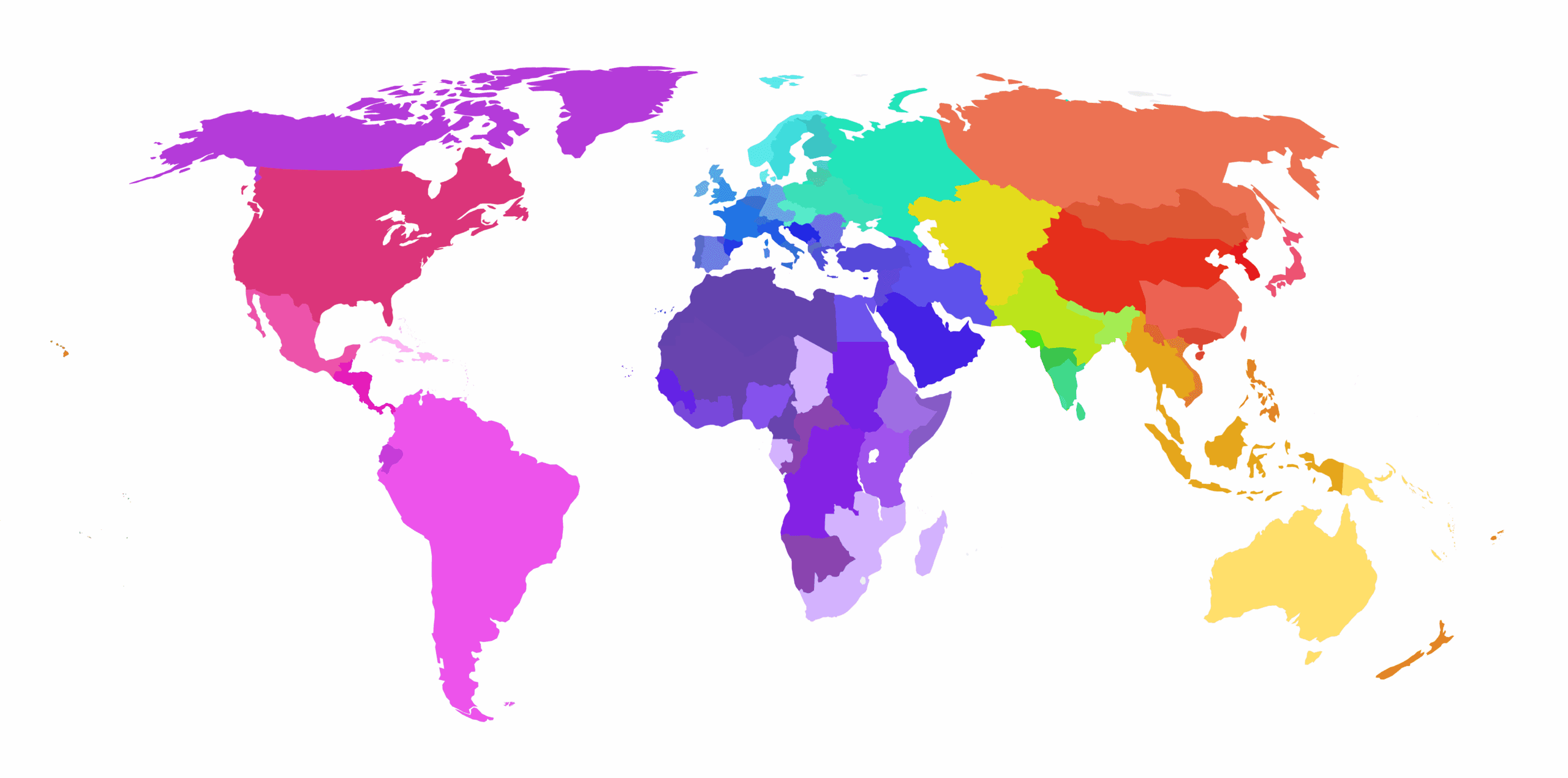Neanderthals may be an ancient species, but their genetics continue to surprise us to this day.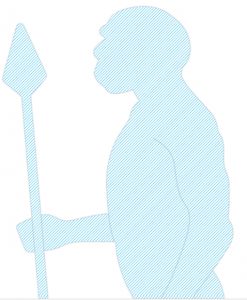
For instance, new research published last month in Science Advances shows that Neanderthal DNA has a longer, more consistent history than previously realized. By comparing the genetic material of two 120,000-year old Neanderthals with specimens from just 40,000 years ago, scientists identified surprising similarities that spanned the 80,000-year gap.
And that’s just one of the discoveries that have us endlessly fascinated!
Consider the following: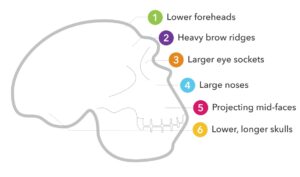
Our Common Ancestor
The story of modern humans and Neanderthals actually starts together since scientists believe we hail from a common ancestor, Homo heidelbergensis. This species inhabited much of Africa, Europe and probably Asia from at least 700,000 years ago until about 200,000 years ago. And it was only at that point that the European branch of Homo heidelbergensis had evolved into a genetically distinct species — Homo neanderthalensis, also known as Neanderthals.
Not Just a Caveman
While popular culture depicts Neanderthals as primitive creatures, they were probably a lot like us. For instance, the earliest European art — Spanish cave paintings of animals and geometric shapes — dates from more than 20,000 years before the first modern humans arrived in Europe. And Neanderthal remains found throughout Europe suggest diets that evolved to match their surroundings. In what is now modern Spain they ate from pine nuts and moss, but mostly ate reindeer and mushrooms in the region of Europe that is now Belgium.
A Neanderthal Human reUnion
Our stories come together again about 60,000 years ago. That’s when modern
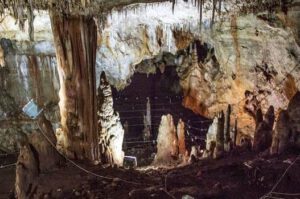
Manot Cave
humans, having evolved in Africa, start to explore beyond the continent. And skeletal remains found in the Manot Cave in Israel and elsewhere suggest that modern humans and Neanderthals began to interbreed. Thus linking our genetics.
The Last Neanderthal
Neanderthals became extinct about 40,000 years ago. But the reason for their disappearance remains a mystery. Some researchers blame climate change or exposure to unfamiliar human diseases. Others point to a decline in fertility rates in Neanderthal communities. While there may be some truth to each of these hypotheses, the disappearance of Neanderthals may also have come down to pure numbers. If there were more humans than Neanderthals 40,000 years ago, the latter may have simply been absorbed into the former.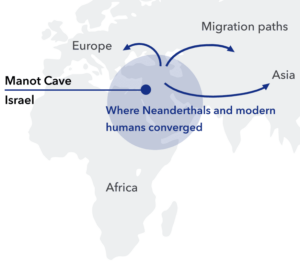
Neanderthals, Unearthed
The first Neanderthal remains were discovered in the Neander Valley in Germany in 1856. However, it wasn’t until 30 years later that scientists realized the skeleton wasn’t just a modern human with bone deformities but a whole new species. Since then, archeologists and others have discovered the bones of more than 400 Neanderthals from Wales to Israel to Uzbekistan.
Our Neanderthal Inheritance
As a result of interbreeding between Neanderthals and modern humans, over 40 percent of the Neanderthal genome lives on today in our gene pool. Non-African populations, in particular, carry that ancestry forward, sharing on average 1-2 percent of their DNA with Neanderthals. However, Sub-Saharan African populations have virtually no Neanderthal ancestry given that migratory paths of Neanderthals spanned from Europe to Western Asia.
Neanderthal Genes Today
While our Neanderthal heritage may be limited, it does have a handful of associations with our traits. For instance, Neanderthal genetic variants are associated with having straighter hair and with being less likely to sneeze after eating dark chocolate. And counter to the popular perception, Neanderthal variants are actually associated with having less back hair! Perhaps most intriguingly, some scientists believe that interbreeding with Neanderthals even provided modern humans with evolutionarily advantageous traits as they migrated into Europe.
How Neanderthal Are You?
If you’re just as intrigued by Neanderthals as we are, start by digging into your own shared ancestry.
You can explore your Neanderthal Report here. And if you’re not yet a customer, you can find out more here.
